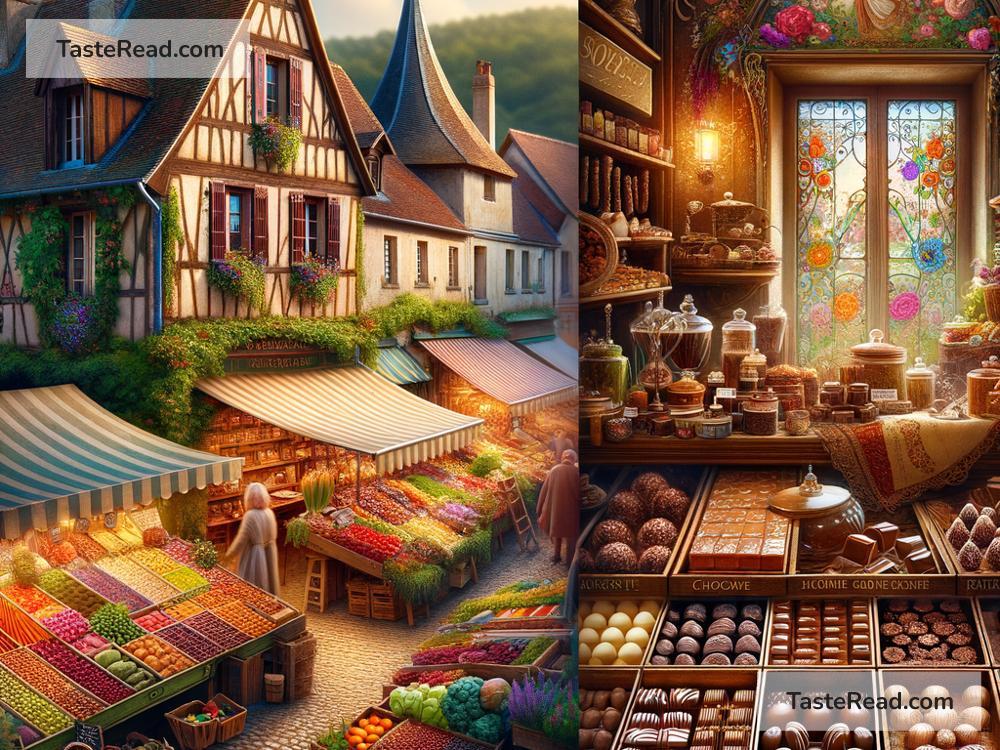The Role of Food in the Magical Realism of Chocolat
Chocolat by Joanne Harris is a novel full of charm and wonder, blending everyday life with a hint of magic. At its heart, the story revolves around the power of food, specifically chocolate, to transform lives and bring people together. The novel uses food as more than just sustenance; it serves as a deep emotional, cultural, and even magical force that shapes the world of the characters. Through the lens of magical realism, food becomes a bridge between the ordinary and the extraordinary.
What Is Magical Realism?
Magical realism blends the real and the unreal, mixing realistic settings and ordinary lives with fantastical elements. This literary style doesn’t separate magic from the everyday – instead, it makes magic feel natural and intrinsic to life. In Chocolat, Joanne Harris uses food, specifically the art of making and sharing chocolate, as the magical thread that binds the story. The magic is not flashy or supernatural; instead, it exists in the small wonders of life, emotions, and human connections.
Vianne Rocher’s Chocolate Shop as a Magical Haven
Vianne Rocher, the protagonist, arrives in the quiet French village of Lansquenet with her daughter and opens a chocolate shop during Lent – a time traditionally marked by self-restraint and austerity. Her chocolate shop becomes more than just a place to buy sweets; it becomes a space for transformation, healing, and joy. The chocolates Vianne creates seem to have the power to awaken hidden desires, heal emotional wounds, and reveal secret truths about the villagers.
Through Vianne’s chocolates, Harris introduces hints of magical realism. For example, Vianne has an uncanny ability to sense what each customer needs – not just their favorite treat but what’s missing from their lives. Her chocolates seem tailored to each person, tapping into their emotions and offering comfort or a spark of change. This isn’t presented as a mystical spell but as an instinctual, almost magical gift that ties Vianne to the villagers.
Food as a Tool for Transformation
The novel shows how food can transform lives, not just physically but emotionally and spiritually. Many of the villagers are initially hesitant about Vianne’s shop, wary of both her free-spirited nature and the indulgent treats she offers. For them, chocolate is seen as a temptation, something to resist during Lent, when sacrifice and restraint are emphasized. However, as they interact with Vianne and her chocolates, they begin to confront their own desires, fears, and insecurities.
Take the example of Josephine Muscat, a woman trapped in an abusive relationship. Vianne’s warmth and the comfort of chocolate help Josephine muster the courage to leave her controlling husband and start fresh. For others, like Guillaume, the chocolates bring simple joy and companionship, filling the void left by loneliness. In each case, chocolate becomes a vehicle for change, helping people embrace their true selves.
Through these transformations, Harris highlights the idea that indulgence – whether in chocolate or life’s other pleasures – can be an important part of healing and growth. Chocolate in the novel symbolizes freedom, happiness, and self-discovery, challenging the rigid norms upheld by the church and some of the town’s more conservative residents.
The Struggle Between Tradition and Indulgence
A key theme in Chocolat is the tension between tradition and indulgence. This struggle is embodied in the conflict between Vianne and Reynaud, the village priest. Reynaud sees Vianne’s chocolate shop as a threat to the town’s moral order. He believes indulgence leads to sin and ruin. To Reynaud, Lent is a time for abstinence, and Vianne’s offerings of sweets and personal liberation are distractions from discipline and faith.
However, Vianne represents a different philosophy – one where pleasure is seen as a gift rather than a danger. She encourages people to embrace their desires without guilt, teaching them to balance responsibility with joy. Her approach challenges rigid traditions, showing that life can be richer and more fulfilling when people allow themselves small wonders.
In magical realism, opposites often coexist. The novel doesn’t dismiss tradition entirely, nor does it promote unrestrained indulgence. Instead, it suggests that both can exist in harmony, creating a middle ground where magic comes alive in the simple act of enjoying food and connecting with others.
Food as a Cultural Connector
Chocolate in Chocolat is not just personal; it’s cultural. Vianne’s recipes and flavors carry stories, traditions, and history from her past. Through her treats, the villagers experience tastes and ideas that are new to them, opening their minds to different perspectives. Just as food is universal, it is also deeply personal, shaping how people see themselves and connect with the world. Chocolate represents diversity and acceptance in the face of the village’s rigid, narrow-minded attitudes.
The Everyday Magic of Food
Ultimately, Chocolat reveals that food goes beyond physical sustenance. It nourishes the soul, sparks joy, and enhances human connections. The magical realism in the novel shows how food can be a source of transformation, empowerment, and even healing. Vianne’s chocolates are imbued with the magic of care, intuition, and love, reminding us that everyday pleasures can be extraordinary.
Joanne Harris uses food as a way to explore themes of acceptance, diversity, and personal freedom in Chocolat. Through the magical realism of chocolate, she captures the power of small moments and simple joys to create meaningful change. The novel celebrates food as more than fuel – it is art, emotion, and magic wrapped into one. And with this magic, chocolate becomes a symbol of freedom, connection, and the courage to be yourself.


